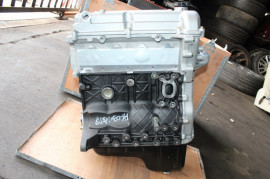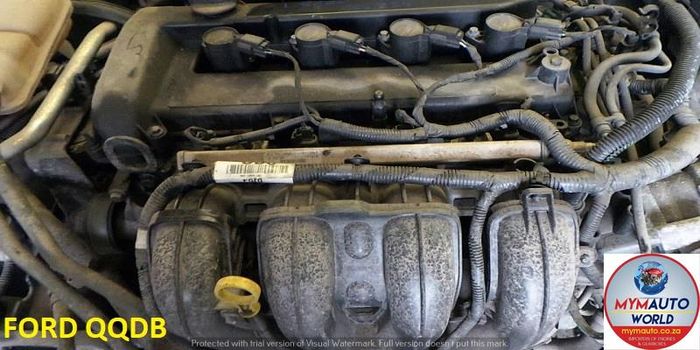Opel Corsa Engine: Top Tips for Maintenance and Care
Opel Corsa Engine: Top Tips for Maintenance and Care
Blog Article
Discovering the Inner Workings of a Compact Lorry's Engine System
As motorists, we commonly take for given the detailed processes that take place within the confines of our vehicle's engine system. In this exploration of a portable car's engine system, we will certainly decipher the internal operations of this mechanical harmony, dropping light on the enigmas that drive us forward on our daily journeys.
Combustion Refine Overview
The combustion process in a portable vehicle's engine system is an important mechanism that effectively transforms gas into power to power the lorry. This process takes place within the combustion chamber of the engine, where fuel and air mix, stir up, and produce controlled explosions. The burning procedure includes four primary phases: consumption, power, compression, and exhaust.
Throughout the intake stage, the piston relocates downward, drawing in a mixture of air and gas into the burning chamber. The next phase, compression, involves the piston relocating upward, pressing the air-fuel mix to raise its strength. Subsequently, in the power stage, the trigger plug fires up the pressed mix, causing a fast development of gases that requires the piston pull back. This downward activity generates the power required to drive the lorry. In the exhaust phase, the scorched gases are removed from the burning chamber through the exhaust valve, preparing the chamber for the following cycle. This cyclic combustion process is basic to the operation of a compact automobile's engine system, guaranteeing effective power conversion for propulsion.
Piston and Cyndrical Tube Interaction

The piston's precise fit within the cylinder is important for preserving ideal compression and stopping power loss during combustion. Tight clearances between the piston and cylinder walls guarantee effective sealing, enabling the piston to move smoothly without allowing gases to leak past. Proper lubrication is additionally vital to reduce friction and put on in between these parts, boosting durability and efficiency.
Moreover, the style and materials used in manufacturing the piston and cyndrical tube influence engine effectiveness and durability. Modern engines commonly use lightweight yet durable products like light weight aluminum alloys for pistons and cylinder liners to lower inertia and boost thermal effectiveness. In general, the harmonious communication between the piston and cylinder is basic to the engine's capability and general performance.
Gas Injection System Functionality
Gas injection systems in portable automobile engines play a crucial duty in exactly delivering gas to the combustion chamber for reliable and controlled ignition. The fuel shot system works by infusing fuel right into the combustion chamber at the ideal moment throughout the engine's operation (opel corsa engine). This specific timing guarantees that the gas mixes uniformly with the air for proper burning, resulting in boosted fuel performance and decreased exhausts
There are mainly 2 types of gas shot systems utilized in portable car engines: port fuel shot (PFI) and direct gas injection (DFI) PFI systems inject gas into the consumption port prior to the intake shutoff, while DFI systems inject fuel straight right into the combustion chamber. Both systems have their benefits, with DFI providing much better gas atomization and PFI providing a much more cost-efficient service.
Comprehending Engine Air Conditioning Systems
Reliable operation of a small lorry's engine relies heavily on the efficiency of its cooling devices. Engine cooling is important to stop overheating, which can result in severe damages and lowered performance. The cooling system in a small automobile commonly includes several elements working with each other to manage the engine temperature level. One crucial part is the radiator, which uses coolant to take in warm from the engine. As the hot coolant streams with the radiator, it launches warmth right into the air, cooling prior to going back to the engine. content The water pump flows the coolant via the engine and radiator, ensuring a consistent flow to control temperature. Furthermore, the thermostat assists manage the coolant flow to preserve ideal engine temperature. Some cars likewise have cooling down fans that trigger when additional cooling is needed, such as during rush hour or heat. Understanding these engine cooling systems is important for preserving the performance and long life of a compact automobile's engine system.

Exhaust System Components Explained
The optimum performance of a small vehicle's engine air conditioning devices depends upon a corresponding system referred to as the exhaust system, which comprises numerous crucial elements for making certain reliable discharges and engine performance. The exhaust system consists of elements such as the exhaust manifold, catalytic converter, muffler, and tailpipe. The exhaust More Info manifold collects exhaust gases from the engine's routes and cyndrical tubes them to the catalytic converter. The catalytic converter then transforms damaging toxins in the exhaust right into less unsafe discharges prior to releasing them through the muffler and tailpipe.
One important part of the exhaust system is the oxygen sensing unit, which checks the oxygen degrees in the exhaust gases to assist regulate gas usage and guarantee ideal engine efficiency. opel corsa engine. Additionally, the resonator may be present in some exhaust systems to decrease sound degrees. Generally, the exhaust system plays a vital role in maintaining engine effectiveness, lowering damaging exhausts, and making certain a quieter driving experience for compact automobile proprietors

Verdict
To conclude, the small lorry's engine system is a complex combination of parts that function together to help with the burning procedure, transform fuel into energy, and get rid of waste gases. Recognizing the inner functions of the engine system, consisting of the piston and cyndrical tube interaction, gas shot system, engine air conditioning mechanisms, and exhaust system components, is important for keeping optimal performance and effectiveness of the lorry.
The redirected here burning process in a compact car's engine system is an important system that effectively transforms fuel into energy to power the car.Fuel injection systems in compact car engines play a vital function in exactly providing fuel to the burning chamber for controlled and effective ignition.There are mainly two types of fuel shot systems made use of in portable automobile engines: port gas injection (PFI) and direct fuel shot (DFI) Recognizing these engine air conditioning systems is crucial for preserving the performance and longevity of a portable lorry's engine system.
The optimum performance of a small vehicle's engine air conditioning devices depends on a corresponding system recognized as the exhaust system, which consists of numerous necessary elements for guaranteeing efficient exhausts and engine performance.
Report this page